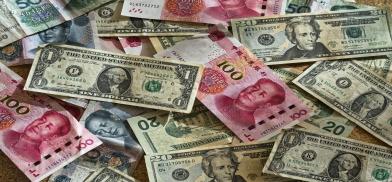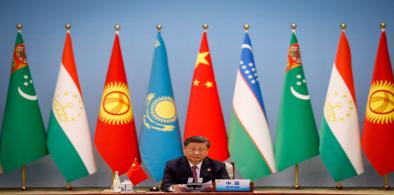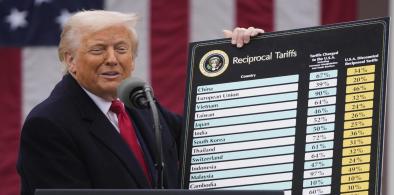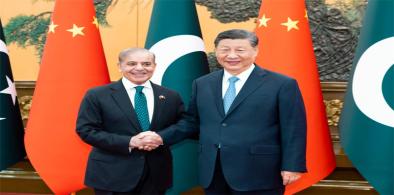When Chinese yuan challenges US dollar: Can India consider yuan-based payment mechanism to increase export competitiveness?
Currently, the total trade between India and China is exchanged through US dollar per se. As the Chinese yuan is not a global currency, it is more stable than the US dollar, writes S. Majumder for South Asia Monitor

“Spooked by the impact of US financial sanctions on Russia, many nations are looking for ways to reduce dependence on the dollar,” said Ruchir Sharma, an investment analyst and chairman of Rockefeller International. There were perceptible changes in the movement of US dollar and Chinese yuan in the central banks of the world in the wake of the Covid-19 pandemic and the Ukraine war. The US dollar has been losing pre-eminence and the yuan is gaining in the pool of global foreign exchange reserves.
According to an IMF report, the share of the US dollar in the world coffer of foreign exchange reserves is declining. The IMF Composition of Official of Foreign Exchange Reserves (COFER) revealed that notwithstanding the global foreign exchange reserves rising to $12.85 trillion at the end of Q3 in 2021, the share of the US dollar declined to 59.2 percent.
The Big Four -- US dollar, pound sterling, Japanese yen and European euro -- hold dominant shares in world foreign exchange reserves. They accounted for 98 percent in 1999. This slipped to 92 percent in 2021. The report revealed that the other three currencies did not fill the gap. Instead, central banks of the world were diversifying their holdings for non-traditional currencies.
Non-traditional currencies
According to a report, global holding of non-traditional currencies increased from negligible levels of 0.2 percent ($30 billion) in 1999 to around 9.1 percent ($1.2 trillion) by 2021. The major four in non-traditional currencies are the Australian dollar, Canadian dollar, Chinese renminbi (yuan) and Swiss franc. They accounted for 71 percent of non-traditional currencies in the global foreign exchange reserves.
The factors which have the potential to make the yuan a challenge to the US dollar are China’s big share in global trade (15 percent in 2020) and China being the powerhouse for global manufacturing. It accounts for one–fourth of the global supply chain.
Alongside, Russia – the second biggest exporter of oil in the world -- is insisting on rubles for oil trade in the wake of the Ukraine war and the Chinese yuan is rising in the Russian foreign exchange reserves too.
Yuan gains prestige
By the end of 2020, yuan was the biggest component of non-traditional currency in the global reserves. It accounted for 25 percent of the central banks globally. These demonstrate that renminbi is emerging fast as a global currency for trade and paves the way for 'de-dollarization'.
In 2016, yuan became the first emerging-market currency to be included in IMF Special Drawing Rights (SDR). Till that period, only the big four had the privilege to be in the SDR.
Owing to increasing trade and political relations, Russia enlarged its monetary settlements with yuan. Eventually, while the share of the yuan in Russian holding of foreign exchange reserves jumped from 12.8 percent in January 2021 to 17.1 percent in January 2022, the share of US dollar halved to 10.9 percent from 21.1 percent over the same period.
China has been the biggest trade partner of India over a period of six years, excepting in 2018-19 and 2020-21. India exports less and imports more from China. Notwithstanding oil and oil products being the biggest import items, China is the biggest import destination for India. Nearly one-sixth of India’s global import is generated from China against 5-7 per of India ‘s export to China.
Given these, it is imperative for India to export more to China to counter-balance its wide trade deficit.
Export more to China
Currently, the total trade between India and China is exchanged through US dollar per se. As the Chinese yuan is not a global currency, it is more stable than the US dollar. Against these backdrops, yuan-based payment mechanisms can play an important role in increasing India’s export competitiveness.
A small rise in interest rate by the Federal Bank spikes the US dollar value and makes Indian products uncompetitive in the global market. Given that the yuan is less susceptible to global fluctuations, Indian products can be more competitive for exports to China and find wider space in the Chinese market as well as other Asian markets. This is because the scope widens for trading in yuan, given that its reserves are increasing in global central banks.
Exports to Vietnam can be a case in point. The biggest items of India’s imports from China are electric and electronic goods. They are the springboard for enlarging trade between India and China. Diagonally, China is the biggest trading partner of Vietnam. The biggest items of Vietnam’s export to and import from China are electronic and electric items.
In the past few years Vietnam has emerged a major exporter of electric and electronic goods to India. It was the second biggest exporter of electric and electronic goods to India in 2020-21 after China. Given these dimensional changes in trade structures, the yuan can reap the growing potential to be the traded currency between Vietnam and India.
The RBI governor has accentuated the need for increasing non-dollar reserves in India’s foreign exchange reserves. India began this exercise in the middle of 2021.
(The writer is a former Adviser, Japan External Trade Organization, New Delhi. Views are personal.)
There was far more states that didn't trade in US dollars,
How is this new currency different to the western democracies?
If the world is once again split by this Chinese move, doesn't place more pressure on China to open up in it's financial records?
When each state must rang it's inflation marks on real Chinese GDP?
Much of China's internal growth is based on state subsidies.
Who will more capitalistic states balance internal inflation with Chinese state subsidies?
The US and EU have a federal reserve system to check inflation, I've heard no such days on which reserve will control inflation of the new members?
What will keep those states from losing their own currency internally to the Chinese?
As more trade within with the Chinese currency and not their own?
Will China demand they raise and lower interest rates to keep the Chinese currency competitive with what?
US dollars
Euros
Yen




















Post a Comment